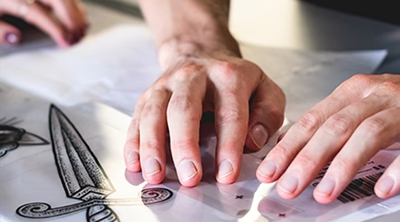Does Screen Printing Ink Need Heat to Dry or Can It Air Dry?
Understanding Screen Printing Drying
In the screen printing process, it is considered an important step. Drying allows the ink to bind to the substrate, making the print itself strong and long-lasting. In general, two types of techniques are typically used.
- Air drying: Letting the ink dry naturally at room temperature.
- Heat curing: Drying or curing the ink with heat, typically using a heat gun, conveyor dryer, flash dryer, or heat press.
The ideal drying method is based on the type of ink that has been utilized in the screen printing process.
Water Based Ink and Air Drying
Water based ink is a popular ink in screen printing due to the fact that it is eco-friendly, has a soft hand, and cleans up easily. It contains water as a main solvent, which causes it to get absorbed into the fibers of the fabric. This renders water based ink air dry in theory.
That being said, while water based inks can air dry if conditions are right (heat, low humidity, good air flow), air drying alone is rarely adequate for long-term durability, especially if the print is to be washed multiple times. Air-dried water based prints may feel dry to the surface, but without the heat curing, the ink may not be fully set, and it may crack, fade, or wash off over time.
For best results, water based ink needs to be heat cured in order to bond well with the fibers of the substrate. Most manufacturers recommend curing temperatures of 320°F to 350°F (160°C to 177°C) for about 1 to 2 minutes, depending on the ink and substrate.
Plastisol Ink and Heat Curing
On the other hand, plastisol ink—another widely used screen printing ink—cannot air dry at all. Plastisol is made up of PVC particles suspended in a plasticizer and only begins to cure when it is subjected to heat at approximately 320°F (160°C). Below that temperature, plastisol ink will remain wet and transferable.
That is why heat curing is a must when screen printing with plastisol ink. Not heat curing will result in a print that never fully dries, smears easily, and will not survive a wash.
How to Properly Dry or Cure Screen Printing Inks
Whether you are screen printing with water based or plastisol ink, screen printing drying methods are crucial for producing quality, long-lasting prints. The following are the common heat curing options:
- Conveyor Dryer: Suitable for large production runs, it provides even and controlled heat.
- Flash Dryer: Usually employed to cure individual layers or small batch work.
- Heat Gun or Hair Dryer: Suitable for the hobbyist, but more challenging to achieve consistent results.
- Heat Press: Extremely popular for final curing, especially with water based ink.
When air drying aqueous ink, ensure that the conditions are conducive to it—warmth, low humidity, and plenty of airflow can go a long way. However, supplement with heat curing where possible.
Conclusion
While water-based ink in screen printing can technically air dry under ideal conditions, heat curing is strongly advised to develop durability, wash fastness, and color density. Plastisol ink, on the other hand, absolutely requires heat to cure because it will not dry on its own.
Understanding your drying process for screen printing and your ink's properties is the secret to producing quality prints that will last. Whether you are home printing or in a commercial enterprise, investing in the right drying equipment and techniques will dramatically enhance the quality and longevity of your printed products.
.jpg)
.webp)


Comments
Post a Comment